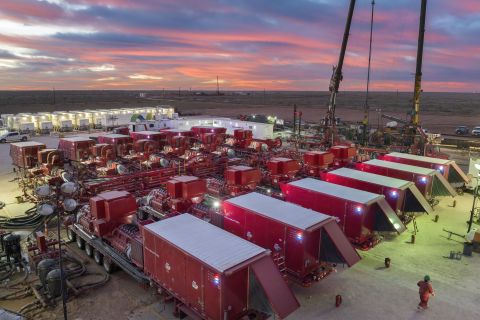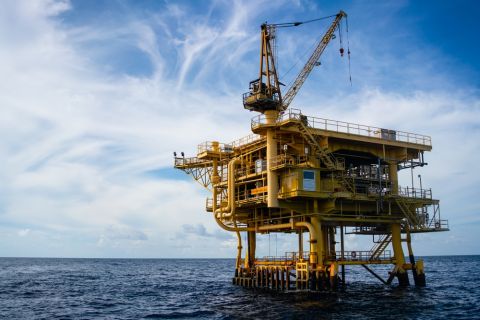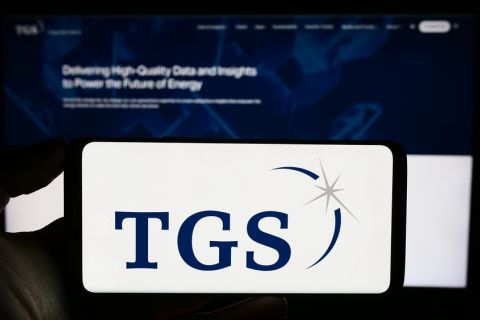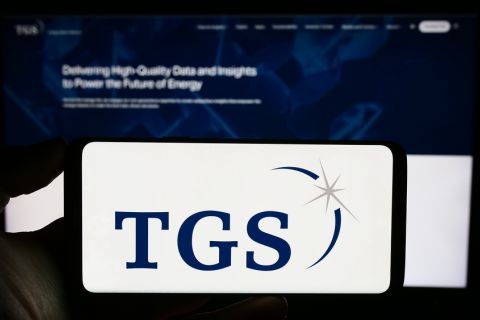The U.S. energy storage market is booming, having added a quarterly record of 1.3 gigawatts (GW) of installed capacity for first-quarter 2024.
The deployments, based on the U.S. Energy Storage Monitor’s report released this week by Wood Mackenzie and the American Clean Power Association (ACP), show that is up 84% from a year earlier. The energy powerhouses of California, Nevada and Texas accounted for 90% of the newly added grid-scale capacity, which jumped to 993 megawatts (MW).
“The rapid growth of the energy storage industry comes at a critical time, providing a solution to growing energy demand and increasingly variable weather conditions that are placing added stress on the grid,” John Hensley, vice president of markets and policy analysis at ACP, said in a news release. “A strong start to 2024 sets expectations high for the remainder of the year.”
Energy storage continues to grow as more intermittent renewables are added to U.S. electric grids. A grid optimizer, energy storage systems can enable grids to become more flexible—holding excess energy for dispatch when needed later.
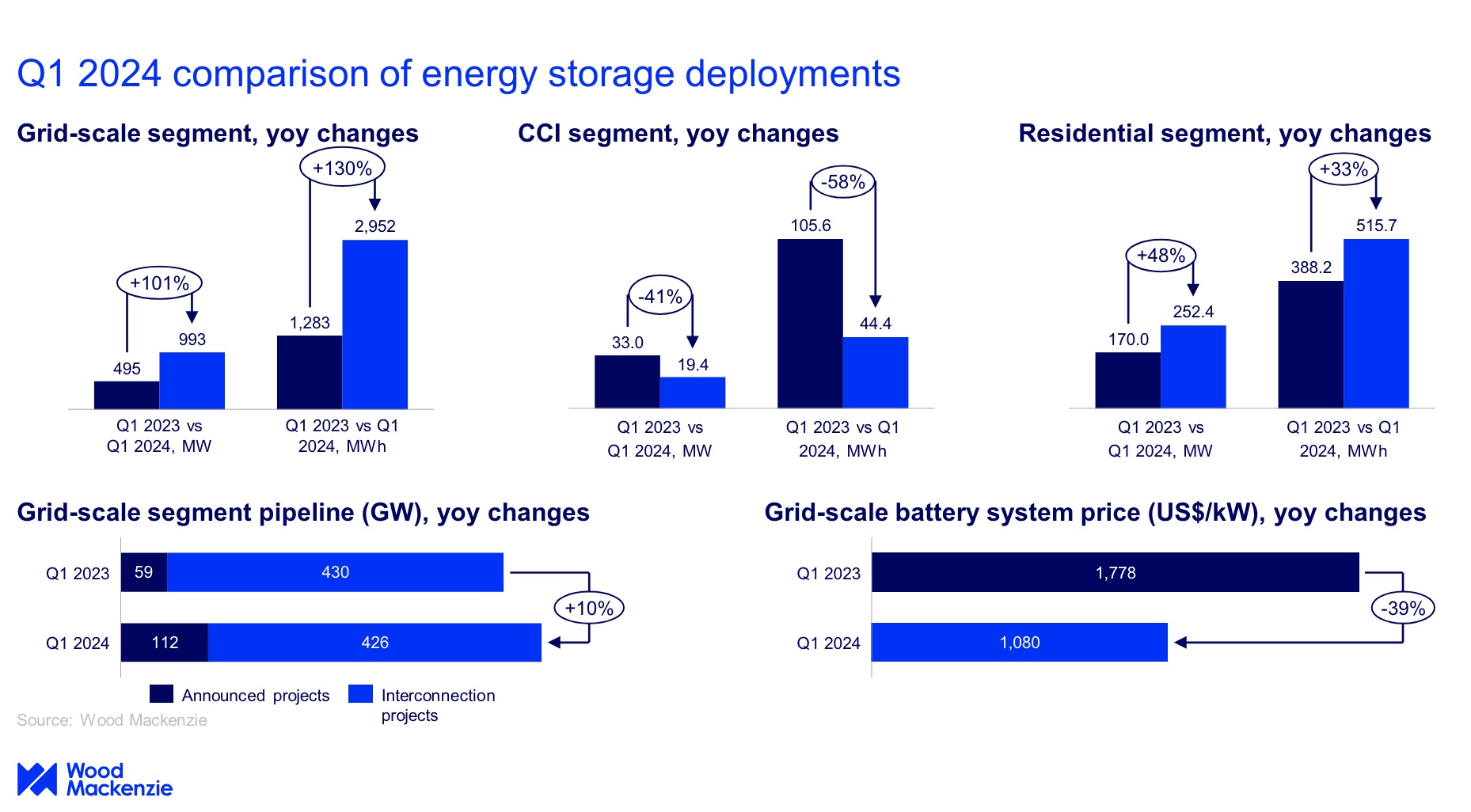
Compared to first-quarter 2023, grid-scale energy storage deployments jumped 101% this year during first-quarter 2024. The segment is expected to continue its growth trend to end the year with 11.1 GW installed, according to the report. Texas is expected to pass California in leading capacity additions.
However, Nevada took the top spot for first-quarter 2024 with 1,416 megawatt-hours installed, about 38% of the first-quarter 2024 grid-scale capacity. Startup of the Gemini Energy Storage made the difference. Located outside Las Vegas in the Mojave Desert, Primergy’s $1.2 billon Gemini solar and energy storage project generates enough energy to power more than 260,000 homes. The project has 690 MW of solar plus 380 MW of battery energy storage.
Here’s a look at other renewable energy news this week.
Bioenergy
BP to Buy Out Bunge’s Stake in Brazilian Biofuels JV
BP agreed to take full ownership of its Brazilian biofuels joint venture (JV) with Bunge—BP Bunge Bioenergia—for $1.4 billion, the energy company said June 20.
The acquisition, expected to close by year-end 2024 pending regulatory approvals, will give BP the capacity to produce about 50,000 bbl/d of ethanol equivalent from sugarcane across five Brazilian states. BP said it believes complete ownership will unlock further growth opportunities in the region.
The move came, however, as BP scales back plans to develop new sustainable aviation fuel and renewable diesel biofuels projects at other existing sites. Targeting value and returns, the company said it will pause plans for two projects it was considering and assess three others.
“Taken together, these changes can enable us to deliver the growth and returns we expect from biofuels, but in a simpler, more focused way,” Emma Delaney, BP’s executive vice president, customers and products, said in a news release. “This is fully in line with BP’s priorities of driving focus into the business and growing shareholder returns.”
BP said the acquisition of Bunge’s 50% interest in BP Bunge Bioenergia meets its expected returns threshold for bioenergy of more than 15% and is within its existing annual capex framework of about $16 billion in both 2024 and 2025.
The acquisition includes the consolidation of Bioenergia’s net debt and lease obligations of about $1.2 billion. The JV was formed in 2019 when the bioenergy and sugar businesses of BP and Bunge were combined.
Energy storage
ABTC Manufactures Lithium Hydroxide From US Facility

Nevada-headquartered American Battery Technology Co. (ABTC) on June 18 said it manufactured lithium hydroxide with internally-developed processing technologies from a U.S resource, reducing reliance on foreign entities.
Demonstration-scale quantities of lithium hydroxide was produced at ABTC’s integrated facility using lithium-bearing claystone material from its Tonopah Flats Lithium Project (TFLP) in Nevada, according to a news release.
Lithium hydroxide is an ingredient in the cathode of lithium-ion batteries, which are used to power electric vehicles, electronics and other devices. The U.S. is home to some of the world’s largest lithium deposits, but little of it is mined domestically. Companies like ABTC are working to change as they pursue lithium projects amid the transition to cleaner forms of energy to reduce emissions.
“There are currently multiple corporations constructing multibillion-dollar facilities for the manufacturing of high energy density cathode active material within North America, and these facilities require large amounts of lithium specifically in the form of battery grade lithium hydroxide as their feed material,” stated ABTC CEO Ryan Melsert. “However, there are currently no commercial facilities within the U.S. to manufacture battery grade lithium hydroxide from U.S.-based resources.”
That is something ABTC aims to change. Having developed its own lithium hydroxide manufacturing technology, ABTC built a demonstration-scale facility with support from a grant awarded by the U.S. Department of Energy.
“ABTC is working to further evolve this technology by constructing a commercial-scale 30,000 tonnes lithium hydroxide per year refinery utilizing this system design directly at its TFLP property, which has been identified as one of the largest lithium resources in the U.S.,” the company said.
Construction firm Black & Veatch has been selected to carry out engineering, procurement and construction (EPC) of ABTC’s commercial-scale lithium hydroxide refinery.
Next steps will include strategic partners using lithium hydroxide in qualification processes as they look to negotiate long-term commercial-scale offtake agreements. The company said it is also commercializing technologies for its battery recycling operations and has manufactured a large inventory of recycled battery metal products at its recycling facility in Storey County, Nevada.
Talga Group, SQM Enter Partnership for Swedish Project
Australia’s Talga Group said on June 21 it entered a binding earn-in agreement with Sociedad Química y Minera de Chile (SQM) to fund the exploration of its Aero Lithium Project in Sweden.
Under the agreement, the battery materials and technology company has granted SQM—the world’s second-largest lithium miner—to earn up to a 70% interest in the project for a total of $19 million in expenditure.
The agreement marks SQM’s entry into the lithium mineral resources in Sweden, especially after the battery metal was classified as a strategic material in the EU Critical Raw Minerals Act.
Talga Managing Director Mark Thompson said the partnership with SQM “provides an important chance to build a European lithium supply for the green transition and EU localization objectives.”
The company said the agreement is subject to Swedish foreign direct investment clearance.
RELATED
North American Lithium Site to Likely Up Mineral Estimates
Hydrogen
McDermott Secures Contract for $8.7B Hydrogen, Ammonia Project
McDermott has been selected by Abraxas Power to carry out engineering and construction planning services for an $8.7 billion green hydrogen and ammonia production project being developed in Canada.
The engineering and construction firm on June 17 said it was awarded an early contractor agreement for the Exploits Valley Renewable Energy Corp. (EVREC) project in Central Newfoundland. The project, expected to become the first commercial facility of its kind for Canada, will use wind and solar energy to produce hydrogen and ammonia.
As part of the agreement, McDermott will provide front-end engineering design, EPC planning services and open book EPC cost estimate for the hydrogen production, ammonia processing and product storage portion of the project, according to a news release.
“Our century of experience, from concept to completion, and integrated delivery model, means we can offer Abraxas a repeatable modular implementation solution that is expected to drive cost savings, reduce risk and provide quality assurance,” Rob Shaul, senior vice president of low carbon solutions for McDermott, said in the release.
Plans are to generate about 200,000 tons of hydrogen and 1 million tons of green ammonia annually at the power-to-X mega project, according to Abraxas. The project will also have its own port infrastructure to enable export of products to global markets.
EU Approves $3.2B in German Hydrogen Pipeline Support
The European Commission has signed off on about 3 billion euros (US$3.2 billion) of planned German state aid for building a system of hydrogen pipelines known as the Hydrogen Core Network (HCN).
Berlin plans to give financial guarantees to allow companies that build and run the 20 billion-euro network to obtain more favorable loans to cover initial losses during the ramp-up phase from 2025.
Encouraging uptake of hydrogen outweighs any distortion to EU competition and trade from the scheme, the commission said on June 21.
Germany’s ruling coalition agreed in April on the financing mechanism and extended the construction deadline by five years to 2037, also offering protection for investors in case of bankruptcy.
Many countries are looking to hydrogen, which can be generated from wind and solar power for a more storable form of green energy, to help them reach net-zero greenhouse gas emissions.
Germany is targeting more than 9,700 km (6,000 miles) of hydrogen pipelines, with existing natural gas transmission making up 60% of the network to power heavy industry sites that cannot switch to electricity.
RELATED
Brewing Hydrogen: Cemvita’s Gold H2 Targets Commercialization
Solar
Canadian Solar Brings Solar Projects Online in Japan
The first of a portfolio of Canadian Solar feed-in premium solar photovoltaic (PV) projects in Japan has begun operations, the company said June 17.
Powered by bifacial modules, the projects include a 1.2-MW project in Ibaraki Prefecture’s Tsukuba City and a 1.9-MW project in Tottori Prefecture’s Daisen Town. The company entered a 20-year power purchase agreement with Toyota Tsusho Corp., which secured 100% of the PV power along with the non-fossil certificates (NFCs) generated by the project, according to a news release.
“Today, enterprises are increasingly demanding clean energy to power their businesses,” said Ryota Yamada, general manager of Canadian Solar’s Japan Energy Group. “As of March 31, 2024, our project development business in Japan totaled 240 MWp [megawatt peak] and 1.675 GWh [gigawatt hours] for solar and energy storage, respectively.”
Toyota Tsusho Corp. plans to provide the power and NFCs to its corporate customers.
Wind
US Approves Ørsted’s Sunrise Wind Off New York
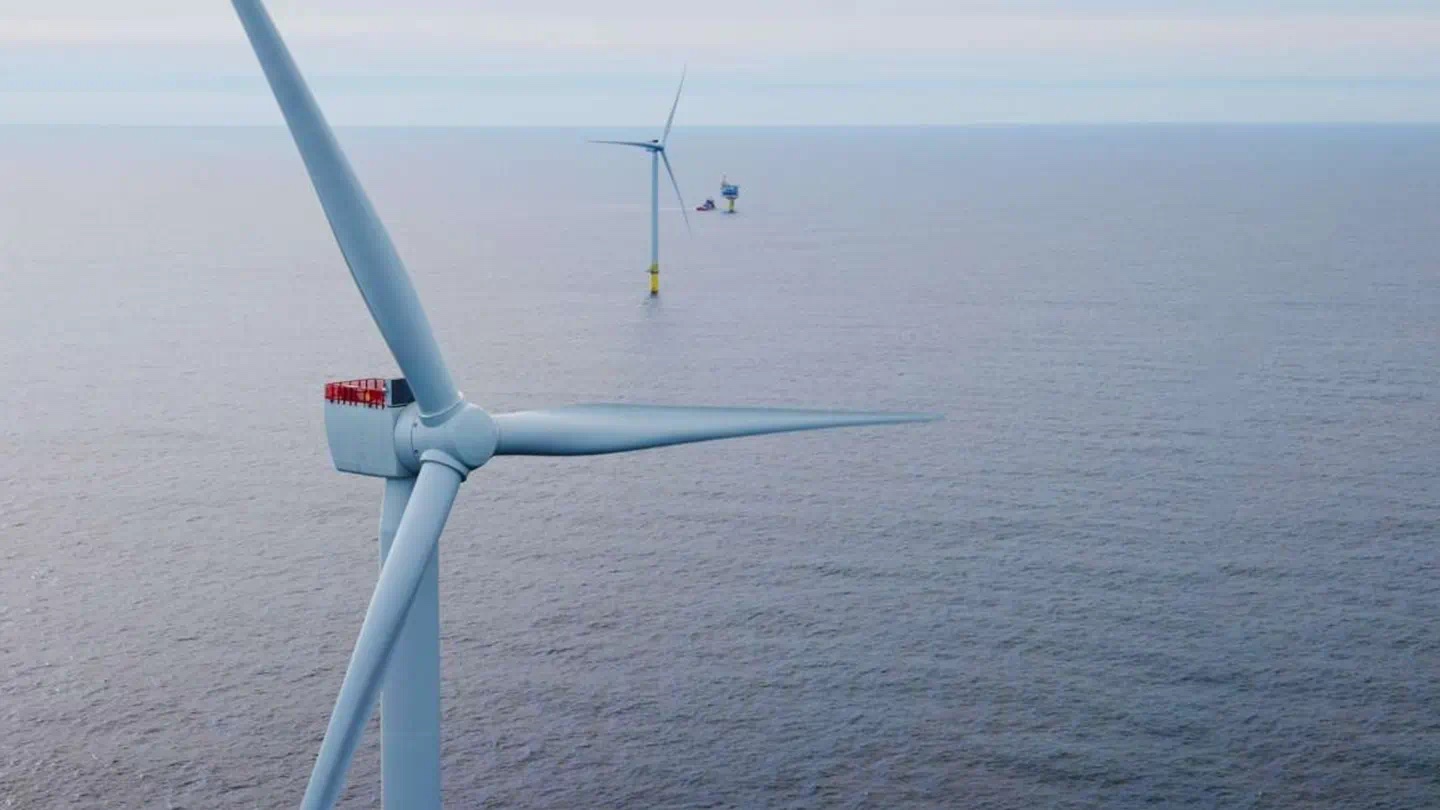
The U.S. Bureau of Ocean Energy Management (BOEM) has approved the construction and operation plan for the 924-MW Sunrise Wind project, developer Ørsted said June 21.
The approval gives the company the go-ahead to start offshore construction.
"Sunrise Wind is a crucial element of New York's green transition, and with this final approval in house, we can officially start the construction phase,” David Hardy, executive vice president and regional director for Ørsted’s Americas region. “BOEM’s approval is an important milestone not only for New York, but also for the U.S. national energy sector.”
The company said it plans to start construction at sea later this year but it is now speeding up construction of the transmission system onshore.
When operational sometime in 2026, Sunrise Wind is expected to produce enough wind energy to power nearly 600,000 New York households, the company said.
TotalEnergies Secures Wind Lease in North Sea
TotalEnergies on June 21 said it has been awarded, as shareholder of Offshore Wind One GmbH, permission to develop 1.5 GW of wind in the German North Sea.
The company was awarded the 25-year maritime concession N-11.2 by the German Federal Network Agency during the country’s latest auctions. Plans are to construct an offshore wind hub, combining the 156-sq km lease area secured with the 2-GW concession N-12.1 won last year, the company said.
“This marks a new step for the deployment of TotalEnergies Integrated Power strategy in Germany after the acquisition of Quadra Energy, one of the top 3 aggregators of renewable electricity production and of Kyon Energy, a prominent developer of battery storage solutions,” said Stéphane Michel, president of TotalEnergies’ gas renewable and power unit.
The company aims to expand its global renewable electricity generation installed capacity to 35 GW in 2025, up from about 22 GW in 2023.
Hart Energy Staff and Reuters contributed to this report.
Recommended Reading
Cracking the Fracking Code: Efficient Approaches to Optimize Wellbores
2024-06-28 - Technology and process innovations improve operational efficiencies even as companies scramble for greener fracking solutions.
At Last, AI Brings Good News for Gas Producers
2024-06-21 - Is artificial intelligence humanity’s power-hungry new friend?
Oceaneering Nabs GoM Umbilical Contract Worth $50MM
2024-06-20 - Offshore services firm Oceaneering secured a large contract with a domestic independent energy customer in the Gulf of Mexico.
TGS Gaining Ground on Subsurface Insights in the Permian
2024-06-19 - TGS released the Dynamic Matching FWI volume for the West Kermit 3D seismic survey, which spans 1,054 sq km across the Delaware Basin in Loving and Winkler counties, Texas.
TGS, PetroAI to Develop Earth AI Models for Well Performance, Design
2024-06-18 - PetroAI’s platform for E&Ps will use TGS’ subsurface, production and well data, which allows for “accurately” quantified exploration and development trade-offs.


